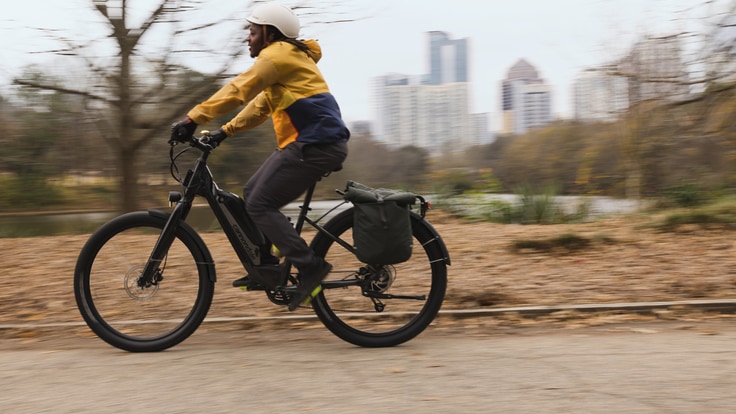Riding an electric bike—or e-bike—for the first time can feel like discovering a superpower. That's because pedal-assist e-bikes extend your two-wheel possibilities: You can keep up in stop-and-start traffic, more easily haul kids or cargo, arrive less sweaty at your destination, or simply enjoy a little extra oomph on rides that otherwise might have seemed too far or too hilly.
E-bikes initially break down into the same categories as conventional bikes: mountain and road, plus niches like urban, hybrid, cruiser, cargo and folding bikes. For an overview of basic bike categories, read How to Choose a Bike.
Video: How to Choose an Electric Bike
Understanding the Three Classes of Electric Bikes
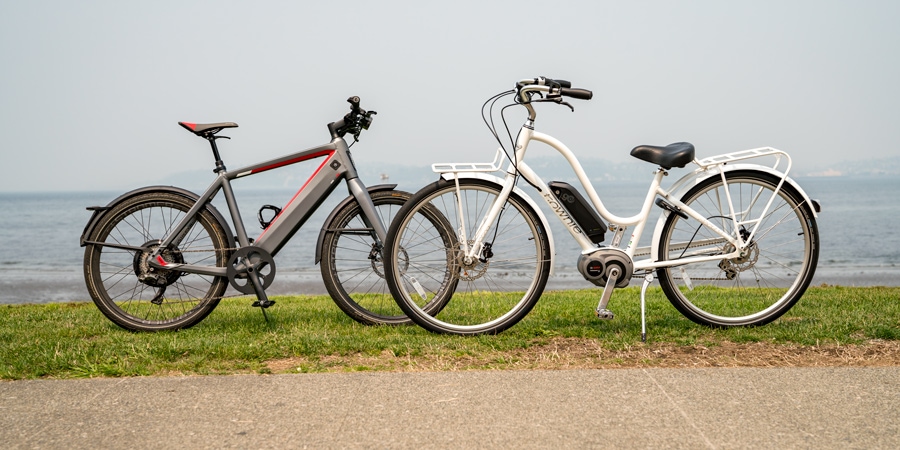
Primarily for regulatory reasons, electric bikes are also divided into classes that denote their level of motor assistance. Most bike manufacturers and state, local and other entities have adopted this three-class system. Figuring out which class of e-bike you need is a key decision point.
What are the three classes of e-bikes?
| Class 1 | Class 2 | Class 3 | |
| Pedal Assist | Yes | Yes | Yes |
| Throttle | No | Yes | No |
| Max Assisted Speed | 20 mph | 20 mph | 28 mph |
Class 1: The motor provides assistance only when you pedal, and stops helping out when the e-bike reaches 20 mph.
Class 2: Also has a pedal-assist mode up to 20 mph; they also offer a throttle-powered mode that doesn't require pedaling.
Class 3: Is solely pedal-assist (like class 1), but the pedal assist stops when the e-bike reaches 28 mph.
Most new riders start out with a class 1 e-bike. Class 1 bikes are the most affordable and, from a regulatory standpoint, the most universally accepted. You can ride one on city streets and many bike paths. This class of e-bikes is starting to be allowed on traditional mountain-bike trails, though access is not universal, so always check first.
Class 2 e-bikes are typically allowed in the same places as class 1 e-bikes. That's because both classes top out at 20 mph for motor assistance.
Class 3 e-bikes are popular with commuters and errand runners. Compared to class 1 bikes, they're faster and more powerful (and cost more). The payoff with added performance is that you can keep up with traffic better. They also climb better and handle heavier loads. The tradeoff is not being able to ride on most bike paths nor mountain bike trail systems.
Research access rules before making a final choice of e-bike class. The caveat to all of the access information above is that laws, licensing, registration, age limits and land-management rules are changing. For a state-by-state guide to e-bikes, check out People for Bikes' state-by-state guide to e-bike regulations around the country.
Ride your e-bike responsibly. Always check the land manager's current rules on where your e-bike class can ride. |
E-Bike Batteries, Riding Ranges and Motors
Manufacturers devote a lot of attention to the power plant in each bike. The design tradeoff is performance versus riding range. A more powerful motor delivers more speed for keeping up with traffic and more torque for climbing hills and hauling cargo. A more powerful motor also burns up the battery faster, reducing your riding range.
When comparing prospective e-bikes, you'll see broad riding-range specs: 20-100 pedal-assisted miles, for example. That's because so many variables affect riding range.
Having a big battery helps, of course: Capacities are stated in watt hours (Wh), the number of hours a battery can sustain 1 watt of power before dying. Thus motor power also matters: A 500-watt motor paired with a 500 Wh battery (a common class 3 bike setup) drains power more quickly than a 250-watt motor with a 500 Wh battery (a common class 1 bike setup).
An interesting online tool that demonstrates the interplay of a wide array of factors that can all affect riding range is Bosch's E-Bike Range Assistant. How and where you ride also matters: For some tips on how to extend your range, read Intro to E-Bikes.
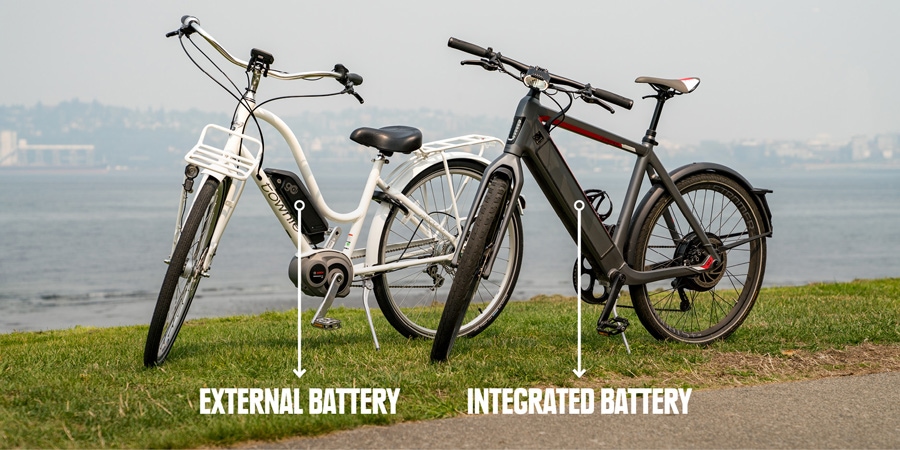
Battery charge time: Most batteries will require three to five hours to fully charge from empty, with large-capacity batteries taking longer. You can buy extra chargers (or carry your charger along) if you plan to commute on your e-bike.
Number of batteries: Some e-bikes allow cyclists to use two batteries at once. This can extend the length of your ride—and if one battery is dead, you have a backup. You can also buy an extra battery to have a fully charged one at the ready or replace yours at the end of its lifespan (typically several thousand charges).
Battery mounting setup: Batteries integrated into the frame clear space for bottle cages or a small bike bag. External batteries, though, are easier to charge and replace.
E-Bike Motor Location
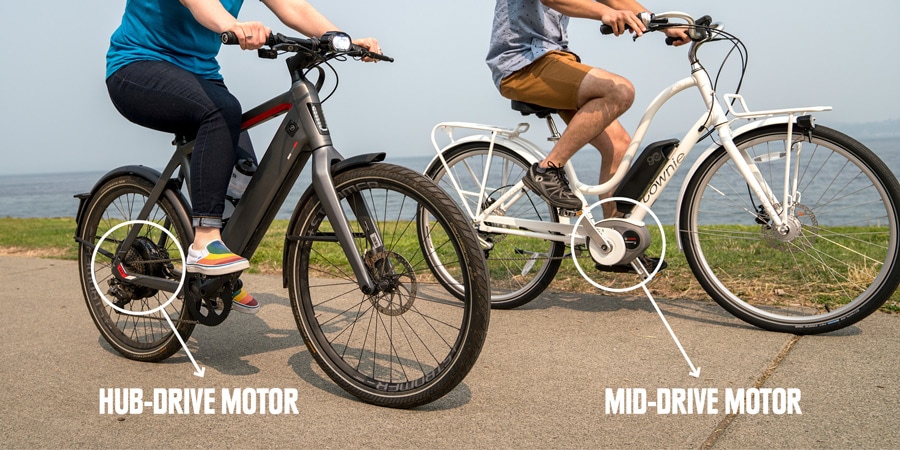
Mid-drive motors are on the bottom bracket (the place where the crank arms attach to the bike frame). Hub-drive motors sit inside the hub of the rear wheel (some are on the front wheel).
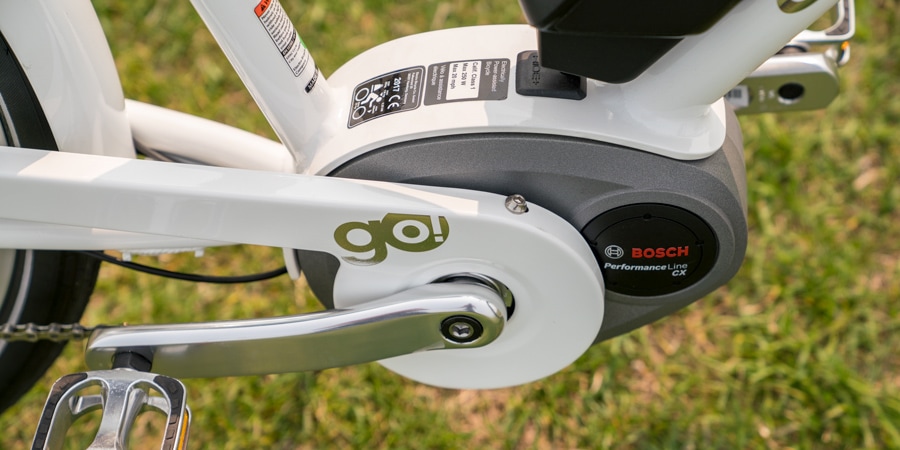
Mid-drive motors: Many motors feature this setup, for a variety of reasons. The pedal assist responds with a natural feel, and having the weight of the motor centered and low helps keep the ride balanced and stable.
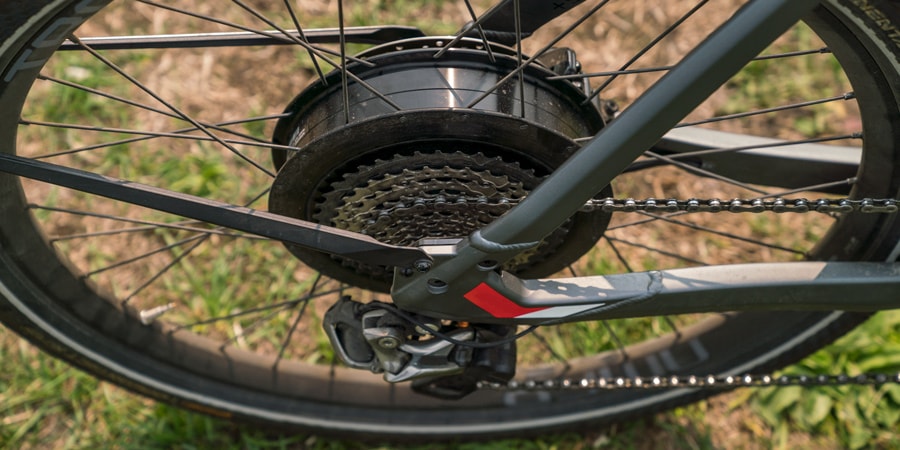
Hub-drive motors: Rear-wheel hub-drive motors send pedal power straight to the rear wheel, giving you a feeling of being pushed along. Note that changing a flat on the wheel where the hub drive is mounted can be more complex than changing a flat on a standard (or mid-drive) bike. Front-hub drive motors handle somewhat like front-wheel drive cars; they also allow a standard bike drivetrain to be used on the rear of the bike.
E-bike Motor Torque
Torque is a spec to check if you plan to ride a lot of hills and/or haul heavy loads. Measured in newton meters (N m), the listed maximum for an e-bike might range from 40 N m to 80 N m. Your actual riding torque will vary, though, as you change your pedal-assist settings.
Other Key E-bike Features and Components
Your e-bike, of course, is more than just its motor and battery. Here are more details to consider when comparing e-bikes:
Pedal-assist activation and pedal feel: The more performance-oriented the bike, the smoother and more responsive its pedal assist will feel. Test ride several bikes to find one that reacts at the speed and intensity that work best for you.
Pedal-assist levels: Most bikes offer 3 or 4 assist levels, allowing you to preserve battery power (eco mode) or summon more speed and torque (in turbo or boost mode).
Integrated accessories: Many e-bikes now come with a range of integrated accessories:
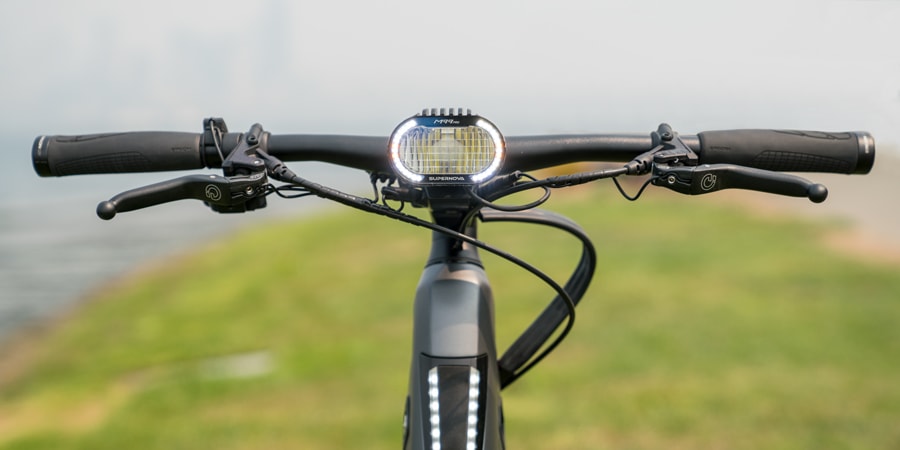
Lighting: Found most often on city and commuter bikes, this is a nice safety feature to have. Systems vary, with high-end bikes having more powerful lighting.
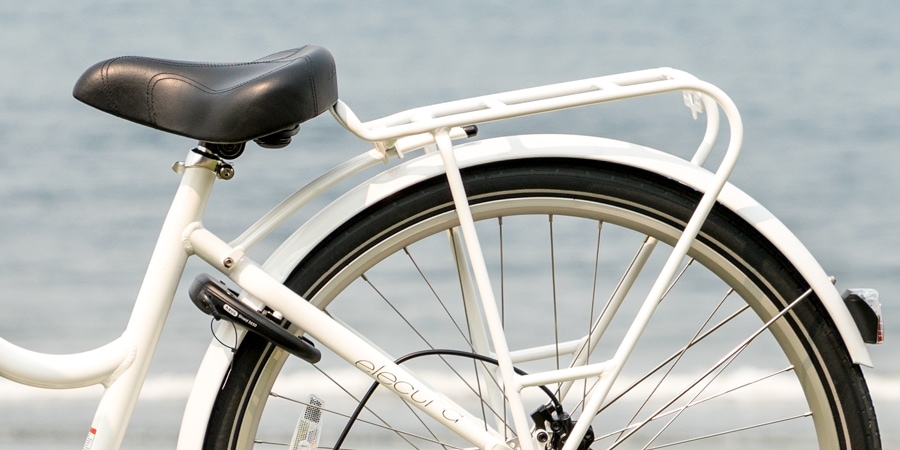
Racks: Typically found on cargo e-bikes, these sturdy racks can support heavy loads. E-bikes can also accommodate a wide range of separately purchased racks, though you'll need to verify that a rack will fit your bike model.
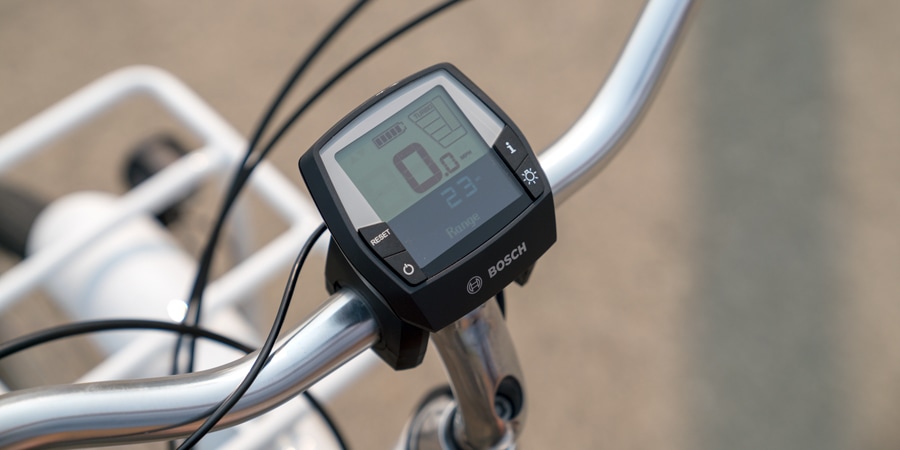
Handlebar-mounted LCD displays: There's a lot going on with an e-bike, so it's helpful to have a handlebar-mounted bike computer that lets you monitor battery life, pedal-assist mode, miles ridden, speed and more.
Smartphone integration: Top-end e-bike electronics can connect wirelessly with smartphones. Available apps might include GPS, service records and additional screen capabilities. Some apps even let you unlock your bike's integrated lock.
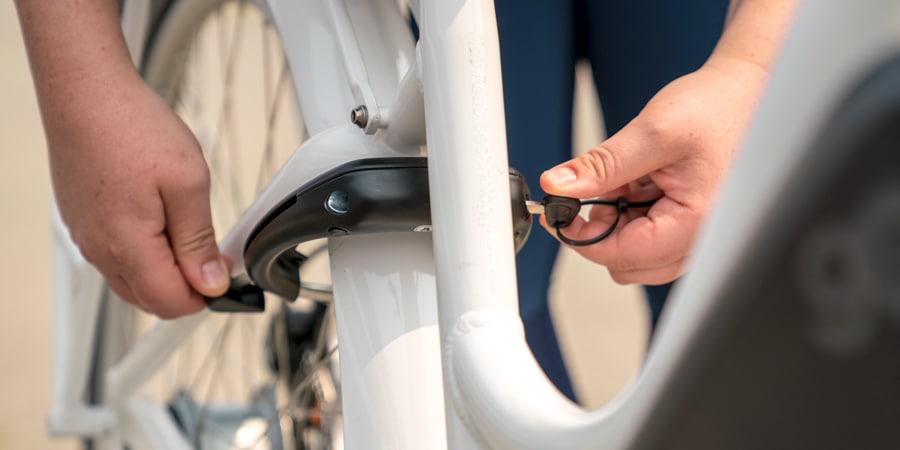
Built-in security: Some bikes come with rear-wheel locks attached to the frame, and others have locks on the battery that can be keyed to match a bike lock (purchased separately) made by a partner brand.
Component quality: E-bikes at different price tiers represent similarly tiered component quality. Less expensive e-bikes often won't have high-end features like smartphone integration, and they'll also have value-priced components. Just as on a regular bike, premium brakes, tires, shifters and drivetrains will be more durable and responsive.
Frames: Most e-bike frames are made of aluminum, though the full range of frame options (from carbon-fiber to steel) is becoming available. Frame material and design, along with the size of the motor and battery, are the biggest contributors to total weight. Generally heavier than their regular-bike counterparts, e-bikes overcome sluggishness through their motor assist. But a lighter bike will still feel more nimble. So, if you are choosing between two otherwise comparable bikes, a lighter model will likely provide the better ride.
Be Sure You Get a Good Fit on Your E-bike
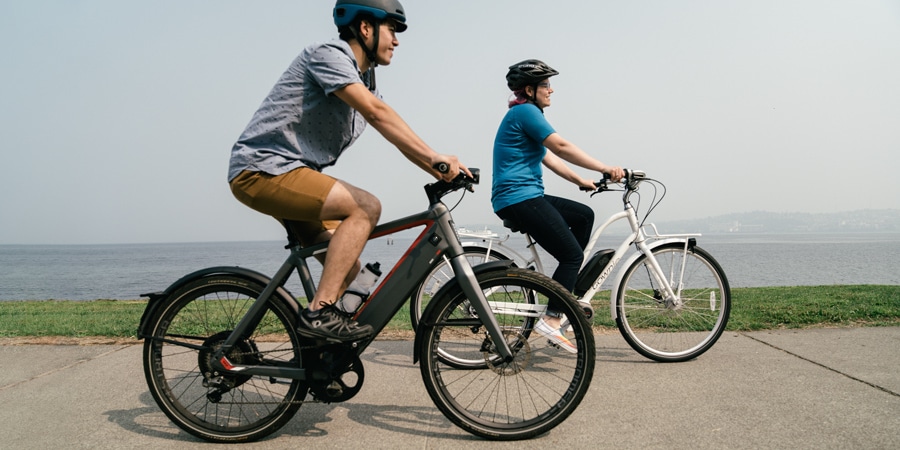
Another truism for both standard bikes and e-bikes is that the best bike for you is one that truly fits you. For an investment as big as an e-bike, it's important to make sure an e-bike feels like it was made for you—or can at least be modified to fit you with a few smart parts swaps—before you ride it out the door.
Most crucial to getting a good fit is knowing which size bike frame you need, loosely based on your height. Beyond frame size, an e-bike's frame geometry will determine how it is supposed to fit your unique body measurements. Visiting a bike shop is the best way to dial in your fit so that your knees, shoulders, back, feet and hands are all properly aligned for the riding position you need. You can also visit a fit specialist for a detailed bike fit, which can prevent chronic injury and help you perform your best. Learn more in our article about how to fit your bike.
While you're at a bike shop, take the time to test the bike you want. Most REI stores have space for customers to do this. Testing more than one bike will give you a better feel for your options and help you confirm which style is best for you.
